In this article, I’ll show you how to use vegetarian symbols, vegan icons, and clear menu labels to not only guide your guests through the menu but also build trust and increase your sales.
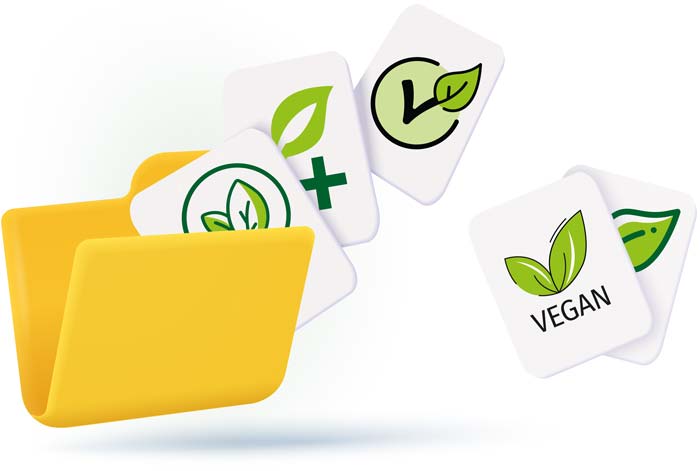
48 professional vegetarian & vegan symbols!
Download my collection of professional menu icons and labels for your restaurant today!
Imagine a vegetarian guest entering your restaurant – how do they quickly find the right dish? The answer is simple: with a clear and visible vegetarian or vegan label in the menu!
Using icons, symbols, or abbreviations makes it easier for your guests to choose confidently. Vegetarians and vegans can instantly recognize which dishes are suitable for them.
| Label | Icon/Abbreviation | Meaning |
| Vegetarian | 🥦 or V | No meat, fish, or poultry |
| Vegan | 🌱 or VG | Free from all animal products |
Examples of signs and symbols

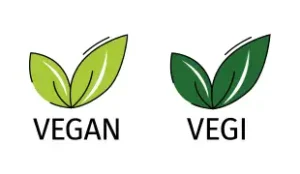



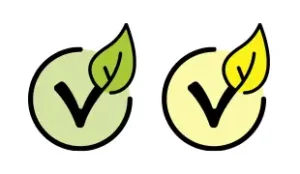
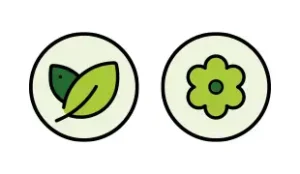
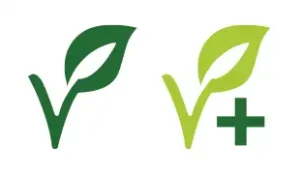
Benefits of Using Vegan and Vegetarian Icons in the Menu
Many guests actively look for vegetarian or vegan menu symbols. That benefits them – and you:
1. Build trust
Clear labeling shows that you care about your guests’ needs. This strengthens trust that vegetarian and vegan dishes are truly meat-free.
2. Easy orientation and comfort
Guests can quickly find suitable dishes without having to ask your staff.
3. Relieve your team
Less explaining means your staff can focus on other important tasks.
4. Better visibility of all dishes
By mixing meat-based and plant-based dishes on the same page, vegetarians don’t miss out – and your overall offer becomes more attractive, even to meat-eaters.

Symbols or Abbreviations for Vegetarian and Vegan
Whether you use icons, abbreviations, or written labels – the most important thing is that the distinction between vegan and vegetarian is clear.

Using Vegetarian and Vegan Symbols in the Menu Correctly
A clearly recognizable vegetarian icon or vegan symbol in the menu helps guests quickly identify suitable dishes. These menu symbols create both orientation and trust.
When you use symbols, make sure the vegetarian and vegan icons are visually distinct so they can be immediately understood and not confused with each other.
Advantages of Symbols
- Easy to apply
- Quickly recognized by the eye
- Intuitive designs, such as a green leaf, are widely understood
- Easy to integrate into the overall menu design
- Helpful for guests with reading difficulties
Disadvantages of Symbols
- Guests need to learn what each symbol means
- Each icon must be explained somewhere in the menu
- Symbol meanings can be misinterpreted or confused

48 Vegan & Vegetarian Icons!
Download my collection of professional vegan and vegetarian menu symbols and icons for your restaurant today!
Labeling Without Icons or Symbols
While icons and symbols look appealing and have many advantages, they also come with one major drawback: they are not always immediately clear! With text labels, however, the meaning is obvious — vegan is vegan, vegetarian is vegetarian.
I recommend highlighting the words vegan and vegetarian in color. Otherwise, plain text can easily get overlooked. A menu should be scannable at a glance.
Tip: Mark the terms vegan and vegetarian in a noticeable color, such as green or orange, to make them stand out visually.
Advantages of Text Labels
- Easy to apply
- No need to explain symbol meanings
- Clear and straightforward for all guests
Disadvantages of Text Labels
- Not as quickly recognized visually
- Limited design flexibility
Another drawback of text-only vegan and vegetarian labeling in menus:
Words like vegan may trigger biases among meat-eaters, for example, the assumption that vegan dishes are less tasty. Studies, however, show that alternatives like plant-based are perceived more positively.
What Abbreviations Exist for Vegetarian and Vegan?
Abbreviations such as V for vegetarian or VG for vegan are widely understood around the world and are commonly used in many countries. They also save space on the menu. The most common abbreviations are:
V – for vegetarian (no meat or fish ingredients)
VG – for vegan (free from all animal products)
Tip: Add a short legend in your menu explaining the abbreviations. This creates clarity and builds trust with your guests.
Advantages of Abbreviations for Vegan and Vegetarian
- Space-saving in the menu
- Very discreet design element
- Internationally known and easy to understand
- Flexible to combine with other menu design elements
Disadvantages of Abbreviations for Vegan and Vegetarian
- Still require an explanation
- Less visually appealing than icons or full text labels
Transparency Creates Trust!
There are many good reasons to clearly label vegan and vegetarian dishes — above all, to create transparency and build trust. Hidden animal ingredients such as meat stock in a salad dressing or gelatin can quickly become a serious issue.
- “Gelatin is made from animal bones!!!!”
“I hope that wasn’t hidden anywhere else on the menu!”
“Can I really trust the other products here?”
The consequences: frustrated guests, uncertainty, and a damaged reputation.
This shows how crucial it is that all dishes labeled as vegan or vegetarian are truly 100% free from animal products. In the end, transparency always pays off — for you and your guests!
FAQ – Frequently Asked Questions
The vegetarian menu symbol shows that a dish contains no meat. Abbreviations like V or a leaf icon are especially popular.
The key difference from the vegetarian symbol is that all dishes marked with the vegan icon must be completely free from animal products.
The most common are V for vegetarian and VG for vegan. These abbreviations are internationally understood and make it easier for guests to navigate the menu.
Download my set of 48 vegan and vegetarian menu symbols here!
Conclusion
Clear labeling shows that you take your guests seriously and makes your offer attractive to everyone. By using symbols, text labels, or abbreviations, you save space, provide orientation, and avoid misunderstandings. Always ensure that labeling is 100% correct — this builds trust and ensures satisfied guests.
Mark all vegan and vegetarian dishes — including desserts and starters — and save space with icons or abbreviations.
Avoid creating a separate category for vegan and vegetarian dishes in the menu. Instead, use consistent and accurate menu labeling. This way, these dishes become visible to all guests and turn into an additional, appealing option — even for meat lovers!
Be very careful that dishes labeled as vegan or vegetarian are truly 100% vegan or vegetarian.
As an alternative to symbols and icons, you can also use abbreviations like V for vegetarian and VG for vegan to make it easier for guests to choose.
No matter which method you choose — symbols, text, or abbreviations — the labeling must always clearly distinguish between vegan and vegetarian!
Get Professional Vegan and Vegetarian Symbols Now
Ready to take your menu to the next level?
Download my set of vegan and vegetarian menu icons and symbols today and impress your guests!


